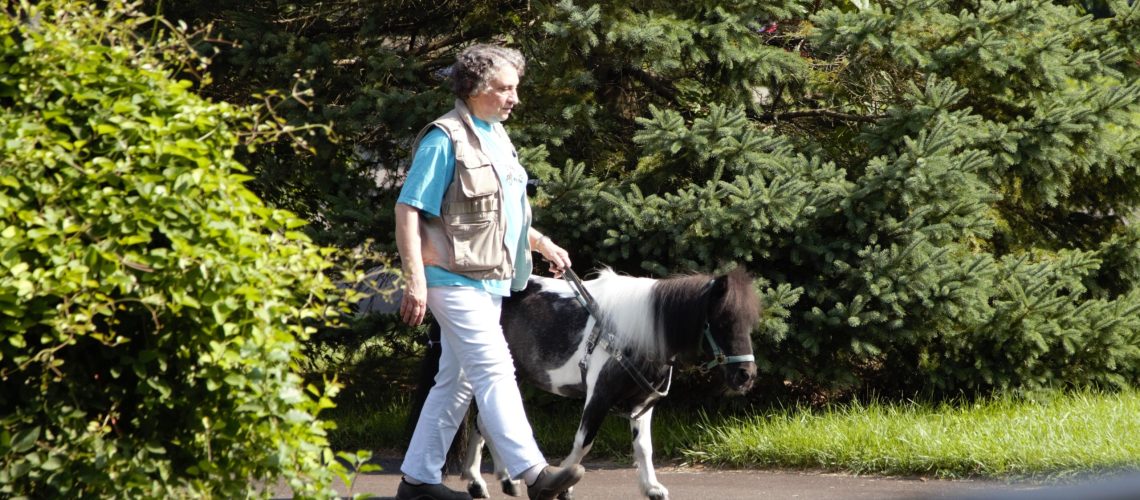Have you ever imagined what it would be like to be blind? Imagine the challenges of moving about to pursue your goals of happiness, feeling useful, earning a living, or taking care of a family without being able to see. Cooking meals, taking care of a home, going to work, and enjoying social time with family and friends are things you may take for granted now, but they take on entirely new qualities if you can’t see. When you can see, you can confidently reach for door handles and push crosswalk buttons without first having to rub your hand up and down a dirty light pole; you can walk directly through doorways without bumping the sides and confidently find where stairs begin without encountering them where you least predict them to be. You can easily enjoy a fast-paced walk for exercise or stimulation, smelling the fresh air and hearing the sounds of the area where you live or work.
Blind people have a number of options for accomplishing these common goals. Many blind people can see changes in light, like bright sun vs. shadows. The temperature change associated with lighter and darker areas can help them determine where the sun is and instantly determine the cardinal directions. Echoes off buildings and parked cars and the sounds of doors opening can help them find their way to buildings for shopping, work, and school. Some blind people use long white canes to sweep back and forth in front of them to help them be aware of upright obstacles and places where missteps are likely to occur. Others use guide animals, usually highly trained dogs that provide information so their blind handlers can make decisions about which direction to go and how to access helpful things like beeping street-crossing indicators, door handles, stairs, mail slots and light switches. A few blind people use miniature horses as guide animals. The story of Ann and her guide horse Panda, how Panda was trained and continues to learn, and how Panda’s precise behaviors help Ann achieve freedom in her daily life will help you understand animal training at its best.
As adorable as Panda is, she is not better than other horses. She was chosen for her naturally confident personality at a young age, but her training is what sets her apart. It began immediately when she arrived. Her trainer, Alexandra, instilled behaviors that helped Panda show the manners required for living in a more human-centered environment than other horses do. Panda sleeps in her own small horse stall at night but spends a great part of each day on carpet, tile, vinyl and wood flooring, asphalt and concrete. She hangs out in air-conditioned or heated rooms with sounds, smells and textures that are not normal parts of most horses’ lives. She mustn’t knock things and she must keep her nose to herself when food is around. She often encounters dogs on leashes or idle, staring cats and must continue to behave politely. Panda remains under Ann’s control at all times and guides her to the places and objects Ann indicates she needs. Panda learned these skills through the use of positive reinforcement, and she learned them to a standard of excellence.
Behavior science helps humans train any animal through positive reinforcement according to a system of principles or rules. It is humane and effective. The trainee, whether horse, dog, or other, volunteers to participate in the learning process. The result is behavior that animals love to do and that humans can rely on. Panda’s trained behaviors enhance Ann’s freedom of movement and her enjoyment of going places and doing things, sometimes preventing tripping or bumping into obstacles. Behavior science helps humans train animals of all kinds, including pets that are easy to live with, performance dogs and horses that compete in sports with their owners, and assistance dogs and horses that help disabled people. It also helps humans learn new skills when it is used in education programs or in behavior modification programs for people wanting to change their habits.
Perhaps you have an animal or a human friend or family member whose behavior you’d like to change; behavior science can show you how. Our film will introduce you to many of the people who developed and are using behavior science to improve the lives of humans and animals. You’ll see animals trained to do amazing things, but perhaps even more amazing are the trainers who learned a better way to train animals. They found that behavior science gives animals the choice to participate in training while setting the standard of quality at no less than excellence.

